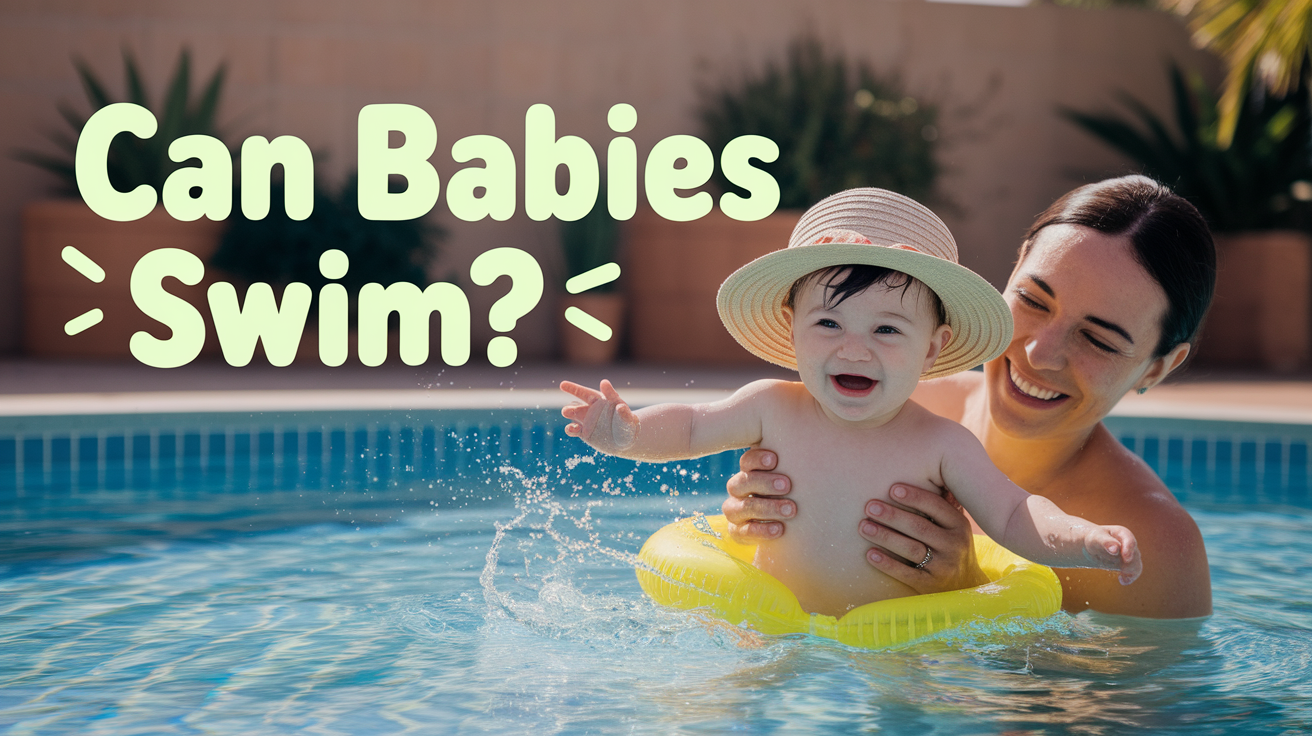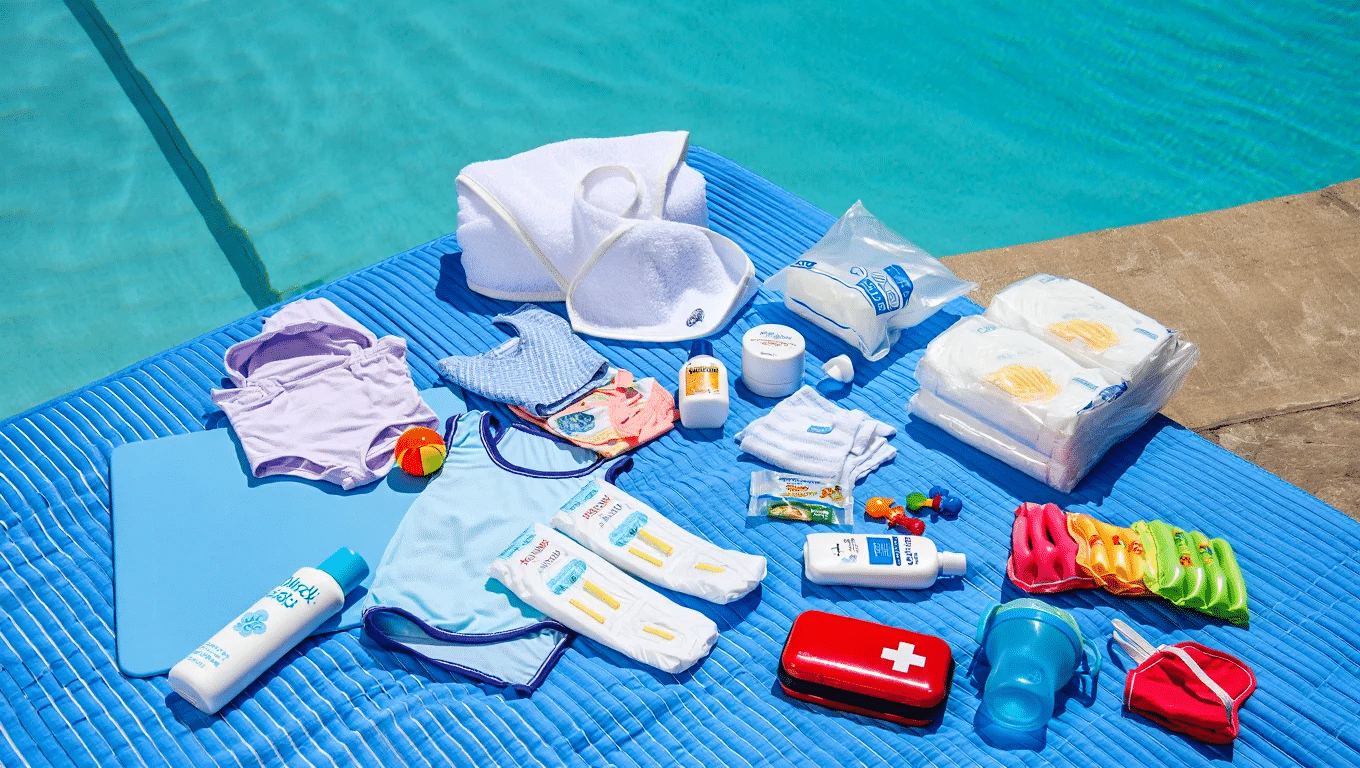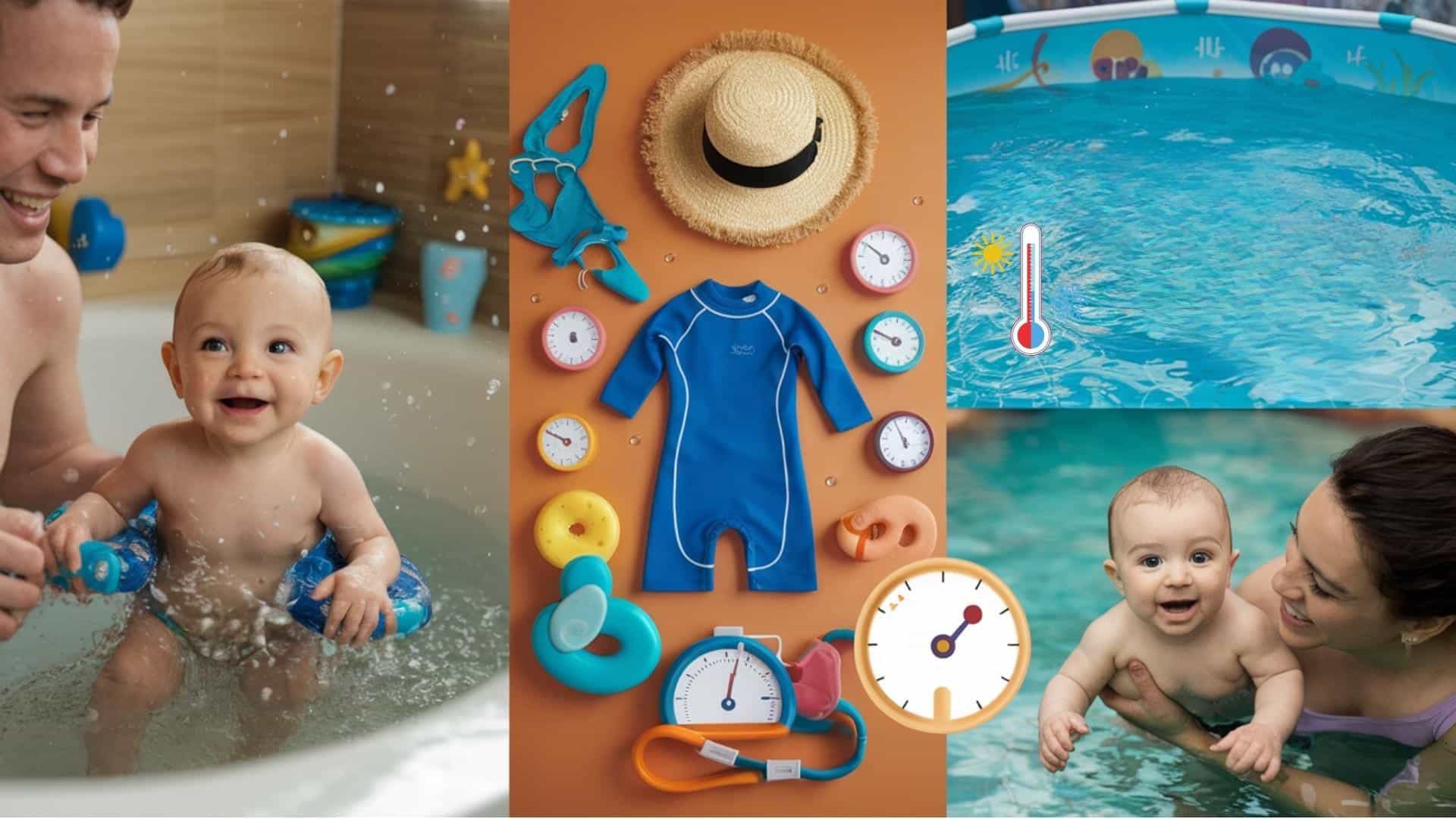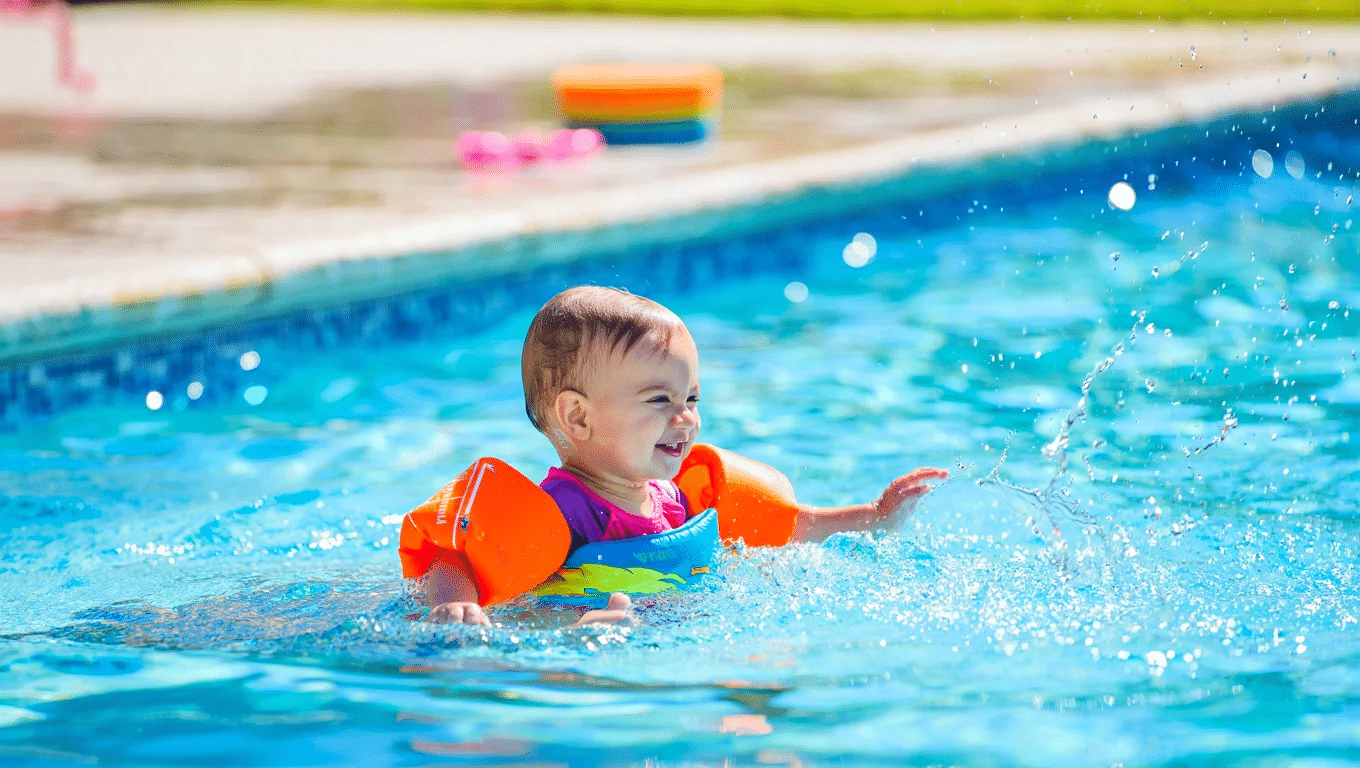
Watching your little one splash and giggle in the water is one of parenting’s purest joys! Y
You’ve probably been wondering when it’s safe to introduce your baby to swimming and how to make it a positive experience for both of you.
Early swimming helps develop your baby’s motor skills and builds confidence in the water. It’s also a wonderful bonding activity that creates precious memories while strengthening your baby’s muscles.
This guide will help you plan the perfect first swimming experience with your baby. You’ll learn the right age to start swimming, what gear you need, and simple activities to make water time fun and safe for your precious bundle of joy.
Ready to make a splash with your little one? Let’s check everything you need to know about when babies can start swimming!
When Can Babies Swim?
Babies can enjoy water play in a baby pool with constant adult supervision as early as 6 months old.
However, according to the American Academy of Pediatrics (AAP), formal swimming lessons shouldn’t begin until age 1, and even then, they don’t prevent drowning.
Children aren’t developmentally ready for regular swimming pools until around age 4, when they can better understand and follow water safety rules.
Why Should Newborns Not Go Into the Pool?
- Immature immune system: Babies this young are more susceptible to infections, and pool water (even chlorinated) can harbor harmful germs.
- Risk of hypothermia: Newborns can lose body heat quickly, and most pools are too cold for their underdeveloped temperature regulation.
- Sensitive skin: Chlorine and other pool chemicals can irritate a baby’s delicate skin and eyes.
- Underdeveloped neck and head control: Infants this young lack the motor skills needed to support themselves safely in water.
- Higher chance of accidental water ingestion: Newborns may reflexively swallow water, increasing the risk of choking or waterborne illness.
Things to Take in A Swimming Pool!

Now that you know your baby is ready to swim, here are the items you should take before heading to the pool with your little one:
Basic Essentials:
- Baby swimsuit
- Swim diapers (reusable or disposable)
- Baby towel with hood
- Change of clothes
- Changing mat
- Plastic bag for wet items
- Baby wipes
- Regular diapers for after swimming
- Baby moisturizer for after swimming
Food & Hydration:
- Snacks and water
- Sippy cup
Safety Items:
- Waterproof sunscreen (SPF 50+)
- Swim cap for baby
- Swimming aids or floats
- Baby-safe water toys
- Small first aid kit
Remember to keep your baby in sight at all times and never leave them alone near water, even with swimming aids.
How to Prepare for Baby’s First Swim?

Introducing your baby to water early helps build comfort and confidence before he/she goes into an actual pool.
- Bath Time Practice: Start with gentle splashing in your bathtub. Let baby feel comfortable with water on their face and body. Use toys and songs to make bath time fun.
- The Right Swimming Gear: Get a swim diaper, a baby wetsuit or swimsuit, and a sun hat. Pack towels, changing supplies, and snacks for after swimming.
- Pool Safety Check: Choose a warm, clean pool with shallow areas. Look for baby-friendly pools that maintain proper temperature (90-92°F).
- Short Sessions: Keep first swims brief (10-15 minutes). Watch for shivering or blue lips—signs it’s time to get out.
- Gentle Introduction: Hold baby close in the water. Support their head and neck while slowly moving around. Sing songs to help them relax.
Introducing Babies to Pool Water

When your baby is comfortable with water, pool time can be the next exciting milestone. Here’s how to safely introduce your little one to the pool:
- Choose the right time – Pick a warm day and a time when your baby is well-rested and fed.
- Use proper swim gear – Dress your baby in a swim diaper and UV-protective swimwear.
- Start with a gentle entry – Hold your baby close and slowly lower both of you into the water up to your waist.
- Begin with short sessions – Keep first pool visits to 10-15 minutes to prevent your baby from getting cold or overwhelmed.
- Maintain constant contact – Always keep one hand on your baby and stay within arm’s reach.
- Make it fun – Bring familiar bath toys and sing songs your baby enjoys.
- Watch for cues – If your baby seems uncomfortable or starts shivering, it’s time to get out.
- Dry and warm up – Have a warm towel ready, and dress your baby quickly after swimming.
Remember, these early pool experiences help build water confidence, but babies cannot actually swim safely on their own, regardless of any “natural” reflexes.
Benefits of Early Swimming for Babies

Introducing your baby to water at an early age offers numerous advantages for their development and well-being. Here are the key benefits:
- Builds water confidence and reduces fear
- Strengthens muscles and improves coordination
- Enhances bonding between parents and babies
- Boosts cognitive development through sensory stimulation
- Improves sleep patterns and appetite
- Supports cardiovascular health and lung capacity
- Develops social skills when swimming with other babies
- Creates a foundation for water safety and swimming skills
Early swimming experiences can prepare your baby for a lifetime of water enjoyment and safety, making it a valuable activity for physical and mental development.
Safety Tips to Follow
Keeping your baby safe in the water is the top priority for any parent. Follow these essential guidelines to ensure a secure and enjoyable swimming experience.
- Always maintain constant supervision – never leave your baby alone in or near water.
- Use proper flotation devices designed specifically for babies
- Take an infant CPR class before introducing your baby to swimming
- Keep the water temperature between 85-87°F (29-31°C)
- Limit swimming sessions to 10-15 minutes for babies under 12 months
Following these safety measures helps create a positive water experience while protecting your little one from potential dangers.
Final Notes
Now you know when and how to introduce swimming to your baby.
Remember that babies aren’t born knowing how to swim, but with a gentle introduction to water between 6 and 12 months and consistent positive experiences, your little one can develop comfort and confidence in the water.
Always prioritize safety with proper supervision, appropriate swim gear, and water temperature checks. For expert guidance, consider professional baby swimming classes.
Remember that each baby develops at their own pace, so follow their cues and keep water experiences fun and stress-free.
With patience and consistency, you’re helping your baby build a foundation for a lifetime of swimming enjoyment and water safety skills. Happy Swimming!
If you’re Interested in More Informational Content on Mothers and Babies, Feel Free to Click Here and explore other blogs that you might enjoy.
